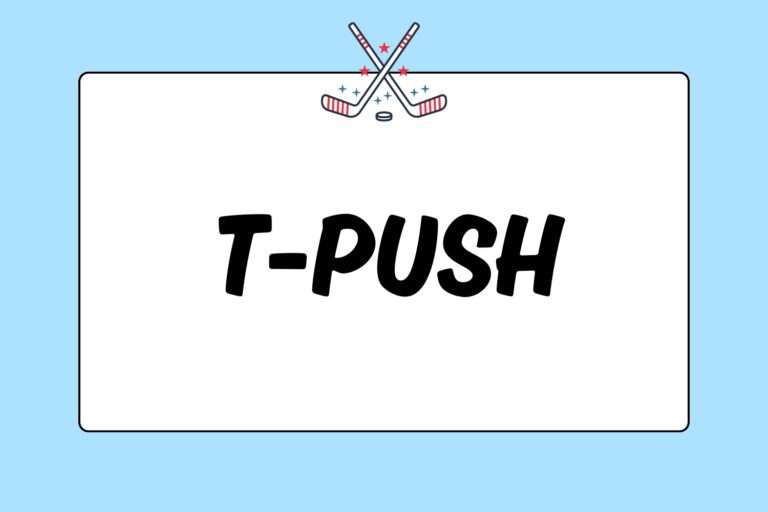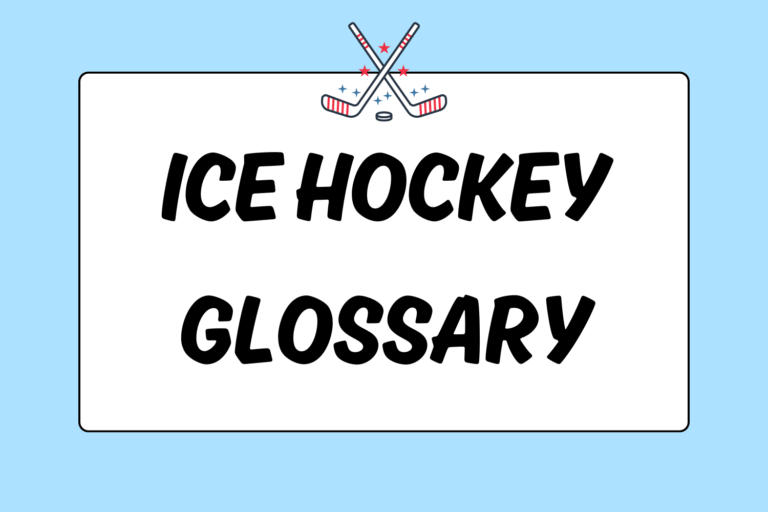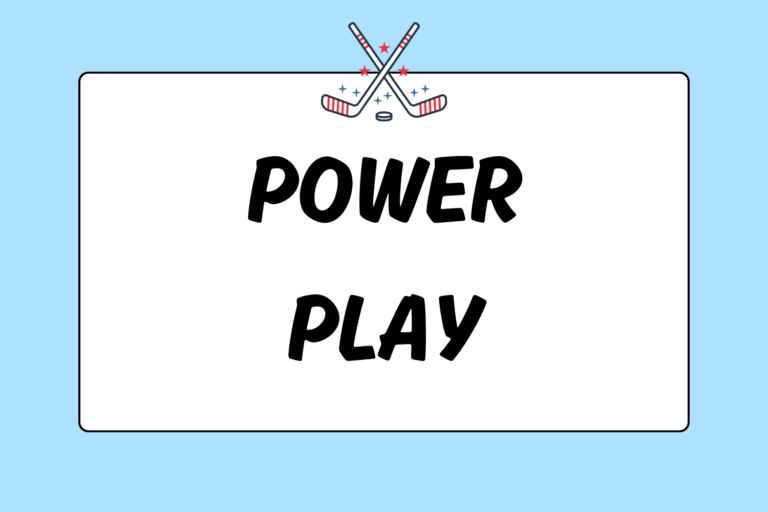Long before Sidney Crosby and Alexander Ovechkin; long before Wayne Gretzky, Mario Lemieux, Bobby Orr and Gordie Howe; and not long, but definitely before even the great Lord Stanley himself, there was hockey.
Well, versions of it at least.
Before Hockey Was Hockey
Canada is now known as the world’s most dominant hockey country, but it took a unique combination of European culture, American Indian sports, and brutal northern winters to shape the sport we recognize today. The Irish sport of hurling, the Scottish sport shinty and English field hockey were all major influences on the development of hockey and were brought to North America—Canada in particular—by European immigrants in the early to mid 1800s. These sports were then affected by a game called tooadijik, played by the Mi’kmaq Indian tribe in Eastern Canada.
Soon, ice was integrated into play as a way to keep the competitions active during the freezing conditions of the winter months. And eventually, the name “hockey”—a derivative of the French term hoquet (shepherd’s stick)—was coined to identify the new sport.
Pucks replaced balls around the 1870s. During that same time, a group of students at Montreal’s McGill University developed a set of rules for the game that involved having nine players per side (later reduced to six players per side), and hockey began to take the shape of a sport that is comparable to the one played today.
Lord Stanley Begins His Reign
One of the earliest official leagues was the Amateur Hockey Association of Canada. The AHAC was organized to help determine a Canadian champion in 1886, but it wasn’t until 1893 that these champions were awarded an official trophy.
After a few years of championship play, the Governor General of Canada, Lord Frederick Arthur Stanley, purchased a bowl-shaped trophy—soon called the Dominion Hockey Challenge Cup—so that the winning AHAC team could be properly recognized and rewarded. In 1893, the Montreal Hockey Club became the first team to win the Cup and went on to capture the trophy again in 1894. The award was later renamed the Stanley Cup.
The National Hockey League took possession of the Stanley Cup in 1917. It has since gone through numerous alterations in size and shape. To this day, the Stanley Cup is awarded to the champion of the NHL. It is one of the oldest continual sports trophies in the world and arguably the most significant prize in North American professional sports.
The Game Goes Pro
Although there were allegations of payment among amateur teams in Canada from the beginning of the AHAC, it wasn’t until the early years of the 20th century that the first official professional league emerged.
The International Professional Hockey League was founded in 1904 and included five teams with some of the best players from both Canada and the United States. It was then that the amateur leagues in Canada began to pay their players and teams, and by 1907, the IPHL had lost its angle. Amateurism was essentially over and hockey was in the professional era.
From 1906 through the 1920s, numerous professional hockey organizations were formed, but only one became a true success.
A League of its Own
The National Hockey League was born November 26, 1917. While hockey fans are familiar with the term “Original Six,” there were actually only five teams when the NHL was founded: The Montreal Canadiens, the Montreal Wanderers, the Ottawa Senators, the Quebec Bulldogs and the Toronto Arenas. The top team from the NHL each year competed for the Stanley Cup against a team from another league. The Toronto Arenas were the first NHL team to compete in what would be known as the Stanley Cup Finals. They won the Cup by defeating the Vancouver Millionaires of the Pacific Coast Hockey Association, 5-3.
The league expanded in 1924, when the Boston Bruins—the first U.S. based team in the NHL—and the Montreal Maroons were officially granted franchise status. By 1927, the league was up to ten teams, including franchises in five U.S. cities (Boston, Chicago, Detroit, New York and Pittsburgh).
Like many of the professional hockey leagues of the early 1900s, the NHL initially struggled to stay in business. The league’s teams were still successful, however, and had sole possession of the Stanley Cup after 1926.
These days, the NHL is the most popular league in the world. While other professional leagues still exist in countries throughout Europe, the majority of the best players from those countries wind up playing in the NHL.
The Man Behind the Mask
The first goalie to wear a mask during a game was Clint Benedict of the Montreal Maroons in a game against the New York Indians in 1930. It covered only part of his face and did little to change the standard for other goalies, who still chose to go without protection on the ice.
Montreal legend Jacques Plante was the first NHL goalie to regularly wear a facemask during games. After his nose was broken from getting a puck to the face in 1959, Plante wore a mask for virtually every game the rest of that season. In doing so, he set a precedent for normal goalie protection.
A trend that began with the small, homemade, leather facial coverage during Plante’s generation has greatly evolved. Goalies now wear high-tech helmets with full facial coverage, and often have them personalized with paintings done by professional artists.
Benedict and Plante were also trend setters for players outside of the goal. While some forwards and defensemen chose to go helmetless into the 1990s, helmets are now a requirement for all players in the NHL.
The Original Six
The Great Depression and World War II took their toll on the NHL. By 1942, four of the ten teams that made up the league in 1927 had folded due to economic struggles. The remaining teams were the Boston Bruins, Chicago Blackhawks, Detroit Red Wings, Montreal Canadiens, New York Rangers and Toronto Maple Leafs. Of these franchises, only the Montreal Canadiens were original members of the league during its inaugural season. Nevertheless, because these six teams stood the test of time and were the only teams in the league from 1942 to 1967, they are known as the “Original Six.”
The Montreal Canadiens dominated the six-team era. With the likes of Plante and right winger Maurice “Rocket” Richard, they won ten Stanley Cups in the 25-season span, including five in a row from 1956 to 1960.
Richard was hockey’s first true superstar. He ruled the NHL in the 1940s and 50s and became the first player in league history to score 50 goals in one season (1944-45).
Detroit right winger Gordie Howe also dominated during the “Original Six” era. Known for an unmatched scoring ability and unrelenting toughness, Howe earned the name “Mr. Hockey,” and is still considered one of the greatest players in history. He helped the Red Wings win four Stanley Cups and had a professional playing career that spanned from 1945 to1980.
Expansion Begins
In 1967, the Toronto Maple Leafs defeated the Montreal Canadiens, 4-2, in a best-of-seven series to become the last Stanley Cup champion of the “Original Six” era. League expansion had been a topic of discussion during the early parts of the 1960s and finally came to fruition June 5, 1967, when the league added six new franchises to instantly double in size. These expansion teams were the Los Angeles Kings, Minnesota North Stars, Oakland Seals, Philadelphia Flyers, Pittsburgh Penguins and St. Louis Blues.
Teams like the Blues, Flyers and North Stars experienced immediate success. All three teams made the playoffs in their inaugural season, with the Blues eventually losing to Montreal in the Stanley Cup Finals. The Blues made the finals again the following two seasons, but lost to Montreal and Boston, respectively.
The Oakland Seals, however, struggled from the outset. They never had a winning season and, in turn, never developed a strong fan base. The team filed for bankruptcy in 1970, and after an unsuccessful move to Cleveland in 1976, left the NHL completely in 1978.
While the Seals couldn’t survive, the rest of the expansion teams continued to thrive. For that reason, the league added the Buffalo Sabres and Vancouver Canucks in 1970.
Later that season, the Boston Bruins won their second Stanley Cup in three years. The Bruins were led by Bobby Orr and Phil Esposito. Orr is widely considered to be the greatest defenseman of all time. In 1970 he became the first defenseman to win the Art Ross Trophy, which is given each year to the league’s top scorer. He finished that season with 33 goals and 87 assists.
Expansion continued throughout the ’70s, as the league added the Atlanta Flames and New York Islanders in 1971, and the Kansas City Scouts and Washington Capitals in 1974.
At the close of the 1974 season, the Philadelphia Flyers gave the NHL a shot of parity by becoming the first post-1967 expansion team to win the Stanley Cup. Led by gritty forward Bobby Clarke, the Flyers would go on to repeat as champions the next season.
Finally, in 1979 the league expanded to 21 teams with the additions of WHA franchises the Edmonton Oilers, Hartford Whalers, Quebec Nordiques and Winnipeg Jets.
It’s a Miracle
Hockey also experienced growth outside of North America, with the establishment of successful amateur and professional leagues in countries like Czechoslovakia, Finland, Sweden and the Soviet Union.
The hockey team from the latter of those countries entered the 1980 Winter Olympic Games (Lake Placid, New York) as the four-time defending Olympic champion. The 1980 version of the Soviet Union team was considered to be one of the greatest ever assembled. Soviet players like goaltender Vladislav Tretiak held near mythical status, as they were rumored to be the best in their sport, but were rarely seen in action because of their roles in their country’s Red Army.
In one of the few times North American audiences did see them play, the Soviets won two of three games played against an NHL All-Star team in a 1979 series called the Challenge Cup. It was in the midst of the Cold War, and the United States and Soviet Union fought bitterly for any chance to prove supremacy over the other.
The U.S. Olympic team was far from a favorite in 1980. It was comprised of amateur and collegiate players with limited or no international experience. When the Soviets and Americans played an exhibition in New York City just prior to the Olympics, the Soviets dominated the game, 10-3, and the chance for American gold in Lake Placid seemed slim if not none.
However, United States coach Herb Brooks had a plan. He put his players through excruciating workouts to transform the team that floundered against the Soviets in the exhibition game into one ready for battle against any team on the ice. To everyone’s surprise, the Americans advanced out of pool play and into the medal round of the Olympics. Their next game, in the semifinals, was against the Soviets.
The game did not disappoint. Energized by the raucous home crowd, the Americans were tied, 3-3, with the Soviets with ten minutes left in the game. That was when Mike Eruzione made his move. The U.S. captain fired a shot through a screen and past Soviet goalie Vladimir Myshkin for what became the game-winning goal. Myshkin had replaced the legendary Tretiak at the start of the second period.
During ABC’s live feed of the game, broadcaster Al Michaels belted out the now legendary question as the final seconds ticked down: “Do you believe in miracles!?”
The game, one of the most important sporting events in United States history, was later dubbed the “Miracle on Ice.” The Americans went on to defeat Finland, 4-2, to capture their second Olympic ice hockey gold medal.
The Great One
In the 1980s, the NHL was dominated by two teams – the New York Islanders and the Edmonton Oilers. With the likes of Mike Bossy and Bobby Nystrom leading the charge, the Islanders won the first four Stanley Cups of the decade. The team had established somewhat of a dynasty and would have made it five Cups in a row had it not been for Wayne Gretzky and the Oilers.
In the 1984 Cup Finals, the Oilers defeated the Islanders, four games to one, to win their first of five Stanley Cups over a seven-year period. Gretzky was the leader of a team loaded with all-stars. Mark Messier, Paul Coffey, Grant Fuhr and Finnish sensation Jari Kurri were remarkable players in their own right — but it was Gretzky who stole the spotlight.
Gretzky’s star power was established from the get-go. In 1980, he became the first player in league history to register 100 points in a season before his 20th birthday. Then in 1982, he broke the single-season record for goals and became the first player to eclipse the 200-point mark in one season. By the end of his career, Gretzky, now known as “The Great One,” broke virtually every major offensive record.
After leading the Oilers to five Stanley Cups, he was traded to the Los Angeles Kings in 1988 in what is now considered the most famous and perhaps most important trade in NHL history. The move charged up the Kings franchise and turned movie stars in Hollywood into NHL enthusiasts. Gretzky led the Kings to the Stanley Cup Finals in 1993, only to lose to the Montreal Canadiens, 4-1. The impact had been made, though, and Gretzky’s mere presence in California opened the doors for NHL expansion into non-traditional hockey cities.
In 1996, Gretzky was traded to the St. Louis Blues for three players and two draft picks. He would last only the rest of that season in St. Louis. In the offseason he signed a free-agent deal with the New York Rangers, the team with which “The Great One” retired in 1999.
Gretzky holds the records for most goals, assists and points in a career—and most goals, assists and points in a season. He is considered to be the greatest hockey player of all time.
A Super Era
The Pittsburgh Penguins’ Mario Lemieux also dominated the modern era of the NHL. Nicknamed “Super Mario,” he led the Penguins to Stanley Cup championships in 1991 and 1992.
During the 1992-93 season, Lemieux was on pace to challenge Gretzky’s records of goals (92) and points (215) in a season, when it was announced that he had been diagnosed with Hodgkin’s lymphoma. He returned to the Penguins 20 games later after radiation treatment. His point totals took an understandably drastic hit, but Lemieux’s courage during his treatment and recovery is and will always be highly respected in the hockey world.
In addition to the Hodgkin’s lymphoma, Lemieux also dealt with serious back problems. Due to various health issues, he missed the entire 1994-95 season. He then retired from the game in 1997, returned to the ice in 2000 and then retired again in 2006. Some hockey aficionados believe that if Lemieux hadn’t missed so many games due to his health issues his name would have been right there with Gretzky’s in the conversation about the greatest player of all time. Lemieux finished his career ranked eighth all time in goals (683), 10th all time in assists (1,018) and seventh all time in points (1,701).
The NHL’s Dark Days
As Gretzky moved out of his prime and Lemieux remained absent because of injury, the NHL entered dark days. In 1994, controversy arrived in the form of a lockout of the players by the league’s owners. This was due to the lack of a collective bargaining agreement, which is a written contract between the team owners and the NHL Players Association. The lockout lasted 104 days and shortened the season to only 48 games.
The NHL continued to shape-shift after the shortened 1994 season. The Quebec Nordiques and Winnipeg Jets were sold and became the Colorado Avalanche and Phoenix Coyotes, respectively. Putting teams in cities with warmer climates became a trend, and in turn, removed teams from the colder, more traditional hockey cities. By 2000, the league had expanded to 30 teams, but difficult times were ahead.
With no new Collective Bargaining Agreement between the players and teams’ owners in place in 2004, the league’s commissioner, Gary Bettman, announced that there would be another lockout and that the 2004-05 season would be put on hold until a CBA was in place. An agreement did not surface in time and ultimately there was no 2004-05 season.
While the league returned with a full season in 2005-06, the damage had been done. Rules were altered and added in attempt to draw more fans to the game, but interest in the NHL spiraled downhill.
Since the ’05-06 season, the league has revolved much of its marketing and advertising around its young stars. The likes of Sidney Crosby and Alexander Ovechkin have given the league a shot of energy. Crosby even did so much as to lead the Pittsburgh Penguins to the Stanley Cup championship in the 2008-09 season. But even with all this damage control, hockey’s status as one of the four major sports in the United States remains in question.





